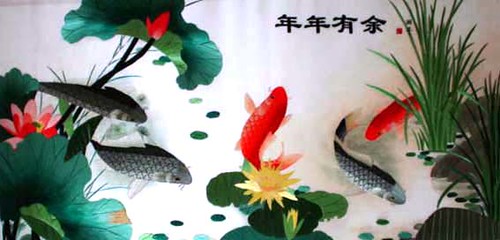| Home > Living in China > Traditional Chinese Medicine |
Traditional Chinese Medicine Science
Chinese people knew how to safeguard their health by medical science and drugs long ago. Legend has it that Shennong Shia of ancient times once tasted 100 herbs in person to distinguish herbal plants. China's earliest extant medical book Canon of Medicine of the Yellow Emperor systematically summarized medical experience before the Spring and Autumn and the Warring States periods (770-221 BC), laying a theoretical foundation for traditional Chinese medical science. The famous doctor of the Warring States Period Bian Que was the first to use observation, auscultation and olfaction, interrogation, and palpation for diagnosis. Observation is to observe the patient's appearance and mental state; auscultation and olfaction are to listen to the patient's breathing; interrogation is to inquire about the onset of the problem and the patient's own feelings, his diet and daily life; and palpation is to feel the pulse of the patient.
Traditional Chinese medicine mainly comes from plants, and also some animals and minerals. These are made into oral or external medicines after being specially prepared. The famous medical book of the Han Dynasty (206 BC-220 AD) Shennong's Materia Medica recorded 365 herbs. The well known doctor Tao Hongjing of the Southern and Northern dynasties (421-589 AD) added another 365 herbs and wrote Variorum of Shennong's Materia Medica. Compendium of Materia Medica, written by the famous doctor Li Shizhen of the Ming Dynasty (1368-1644 AD), included nearly 2,000 medicines and 10,000 prescriptions.
There are numerous famous doctors in Chinese history, such as Bian Que, Hua Tuo, Zhang Zhongjing, Sun Simiao, Li Shizhen, who relieved patients of pain with their consummate medical skills. In modern China, there are also many famous doctors who try hard to resolve serious difficulties and work for the well-being of the people. The medical sciences of China's ethnic minority groups, with distinctive features, have also contributed much, including that of the Mongolian, Tibetan, Uygur and Dai groups.
Art
 more
moreThe Romance of butterfly lovers

Introduction to Suzhou Embroidery
Suzhou embroidery-one of China's four famous embrodiery styles, has a

Local Styles of Paper-cuts in China
Daisy Though making of paper-cut is simple, its

Customs
 more
more



 print
print  email
email  Favorite
Favorite  Transtlate
Transtlate 
